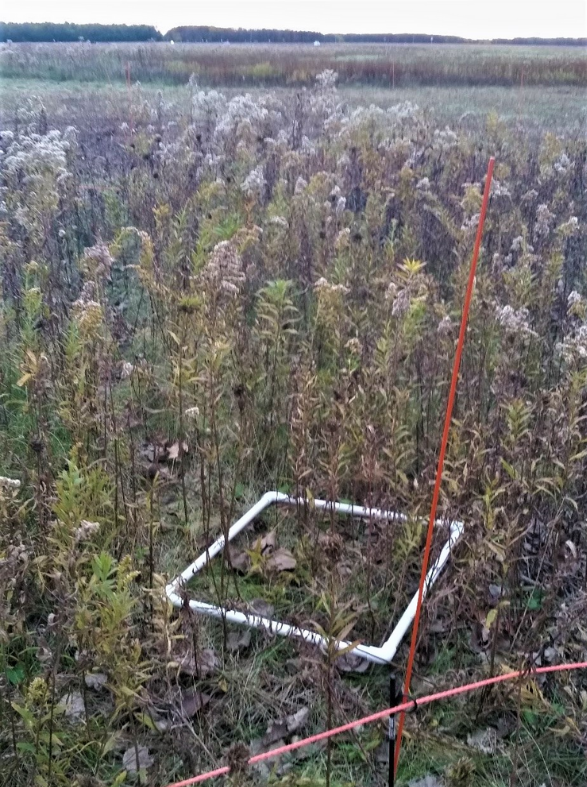Tall Goldenrod Management in Tallgrass Prairies
Tall goldenrod (Solidago altissima) is an aster family species native to a large portion of North America and introduced to Europe and Asia. This species has the beautiful golden-yellow flowers typical of other goldenrods, and blooms from late summer into the fall. The plants tend to stand out at the end of their flowering period after other species have gone to seed, and beyond that when the tall goldenrod flower heads turn into white puffballs of seeds.
Tall goldenrod is a common sight for restoration ecologists and land managers hoping to improve prairie and old field plant communities. It often thrives in disturbed areas where other species have not yet established. This species may also deter invasive species growth via its rhizomes and allelopathic chemicals. However, once rooted, tall goldenrod is liable to become highly aggressive. It can easily choke out not only invasive species, but other native species important to the plant community. Studies in the U.S. and abroad have investigated the effect of tall goldenrod on the community and how to curb its spread.
Here in northeastern Illinois, tall goldenrod is a concern for land managers and researchers with the Chicago Botanic Garden (CBG) and Forest Preserves of Cook County (FPCC). It occurs in high densities in numerous tallgrass prairie and old field habitats in the Chicago area, including two FPCC properties where I am researching tall goldenrod management methods. These properties include Bartel Grasslands and Bobolink Family Area, both of which have been the focus of restoration and management activities, but to differing degrees. At Bartel, tall goldenrod has been mowed every fall for multiple years, and anecdotal reports suggest this has decreased the overall density of the species in many areas. At Bobolink, mowing has not recently occurred, and the density of tall goldenrod is quite high in multiple areas.

Stand of tall goldenrod gone to seed at the Bartel Grasslands site. The white frame marks the quadrat for a vegetation survey and tall goldenrod stem count. By Alexis Balog. 
Stand of tall goldenrod after mowing at the Bartel Grasslands site. By Alexis Balog.
My research studies the effects of mowing and seeding treatments on tall goldenrod populations at these two sites. I am testing four treatments: 1) fall mowing, 2) seeding, 3) fall mowing and seeding, and 4) no mowing and no seeding (control). Treatments were performed in areas where overall tall goldenrod cover was at least 50%. For the mowing treatments, FPCC conducted mowing in October 2020. For the seeding treatments, I used twelve native species selected after consulting land managers, other researchers, and species lists from past surveys at Bobolink provided by the FPCC. The seeds included species shown to perform well with tall goldenrod in experimental prairie plots at the Morton Arboretum, based on research conducted by PhD student Adrienne Ernst. I collected and purchased seeds from September to October 2020, cleaned and weighed the seed at the CBG science center to achieve a more accurate estimate of Pure Live Seeds sown per square meter, and I sowed seeds in December 2020 to allow them to overwinter naturally.
Prior to implementing the treatments, I counted tall goldenrod stems and conducted vegetation surveys within each study plot. This summer I will work with an undergraduate intern as part of Chicago Botanic Garden’s summer Research Experiences for Undergraduates program to conduct additional vegetations surveys, and to investigate differences between the tall goldenrod populations at Bartel and Bobolink. I will also conduct final vegetation surveys in the fall to see if the imposed treatments explain changes in the tall goldenrod population. While my Master’s research will conclude after this Fall, we know that restoration is a long-term process, and CBG will continue to monitor these plots over the long-term to ultimately share our findings with the community.
Want to learn more about tall goldenrod management? Check out Karen Glennemeier’s research on tall goldenrod in oak woodlands in the Spring 2021 issue of The Harbinger, the statewide newsletter of the Illinois Nature Plant Society.


